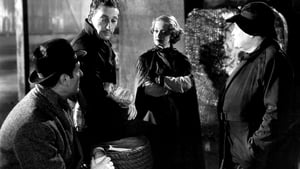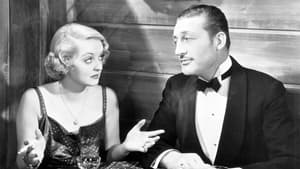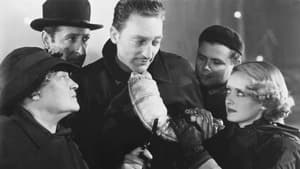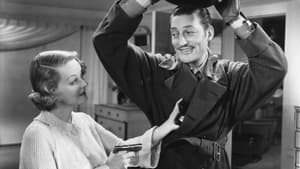Contact: info@alwanfilm.com
Video Sources 0 Views
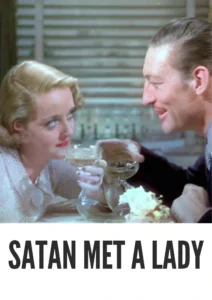
Synopsis
Satan Met a Lady 1936 Colorized Review: A Noir Classic Reimagined

Introduction
The 1936 film Satan Met a Lady stands as a unique and intriguing entry in the realm of classic cinema. Directed by the talented William Dieterle, this film is notable for being an early adaptation of Dashiell Hammett’s novel The Maltese Falcon. While the film’s noir elements and plot offer a captivating glimpse into the genre, its status as an early adaptation provides a special layer of interest. In this review, we will explore the impact of Satan Met a Lady (1936) within the context of film history, analyze its narrative and performances, and discuss its place in the legacy of noir cinema.
Check The Full Colorized Movies List
Check Our Colorized Movies Trailer Channel
Understanding Satan Met a Lady 1936 Colorized: Director, Cast, and Genre
Director’s Vision
William Dieterle, known for his versatility and craftsmanship, directed Satan Met a Lady (1936) with a distinctive approach to the noir genre. Dieterle’s vision for the film involved a blend of suspense, dark humor, and intricate plotting. His direction emphasized the film’s moody atmosphere and complex character dynamics, laying the groundwork for future noir films. Dieterle’s ability to create tension and intrigue through visual and narrative techniques is evident in this early noir adaptation.
The Iconic Performance of Actors
The cast of Satan Met a Lady (1936) includes several notable actors who brought their own flair to the film. Warren William stars as the charming yet morally ambiguous protagonist, who navigates a web of deceit and danger. William’s performance is both suave and enigmatic, capturing the essence of the noir antihero.
Bette Davis, in one of her early roles, delivers a compelling performance as the femme fatale. Davis’s portrayal of the film’s central female character adds depth and complexity to the narrative, showcasing her talent and versatility. The chemistry between William and Davis is a highlight of the film, contributing to its allure and suspense.
Exploring the Genre
Satan Met a Lady (1936) is a quintessential example of the early noir genre, a style characterized by its dark themes, morally ambiguous characters, and intricate plots. Noir films often feature private detectives, femme fatales, and a sense of existential dread, all of which are present in this adaptation. While Satan Met a Lady is an early example, it encapsulates many of the elements that would become defining features of the genre.
Exploring the World of Satan Met a Lady 1936 Colorized: Plot and Characters
Detailed Synopsis
Satan Met a Lady (1936) centers around a series of events involving a mysterious statuette, a web of deceit, and a private detective caught in the middle. The film opens with the protagonist, played by Warren William, being drawn into a complex case involving the theft of a valuable artifact. As the plot unfolds, he encounters a series of intriguing characters, including the enigmatic femme fatale portrayed by Bette Davis.
The narrative is filled with twists and turns, as the protagonist navigates a labyrinth of deception and danger. Key moments include dramatic confrontations, surprising revelations, and a climax that ties together the various plot threads. The film’s characters are richly developed, each contributing to the story’s depth and intrigue.
The Complex Protagonist and Memorable Supporting Characters
The protagonist, portrayed by Warren William, is a classic example of the noir antihero. His character is both charming and morally ambiguous, navigating a world of deceit and corruption. William’s performance adds layers to the character, making him both relatable and enigmatic.
Bette Davis’s role as the femme fatale is equally compelling. Her character is a complex mix of allure and danger, driving much of the film’s tension. The supporting characters, including various criminals and schemers, add depth to the narrative and contribute to the film’s overall sense of intrigue.
The Art of Film Noir
Understanding Noir Aesthetics
Film noir is a genre characterized by its distinctive visual and thematic elements. Noir films often feature low-key lighting, deep shadows, and a sense of urban decay. These visual elements contribute to the genre’s moody and atmospheric tone. The use of voice-over narration and complex, morally ambiguous characters are also hallmarks of noir cinema.
Satan Met a Lady (1936) embodies many of these elements, creating a dark and immersive experience for the viewer. The film’s use of lighting, camera angles, and narrative structure reflects the core aesthetics of the genre, establishing it as an early example of noir filmmaking.
Development Over Time
The noir genre evolved over the years, with later films refining and expanding upon its core elements. The early noir films, including Satan Met a Lady, laid the groundwork for the genre’s development, influencing subsequent films and directors. As noir cinema progressed, it incorporated new techniques and themes, further shaping its legacy.
Early Noir Films: A Brief History
Emergence of Noir Techniques
The noir genre began to take shape in the 1940s, influenced by the hard-boiled detective fiction of the time. Early noir films drew inspiration from literary sources and incorporated distinctive visual and thematic elements. Techniques such as chiaroscuro lighting, complex narratives, and morally ambiguous characters became defining features of the genre.
Satan Met a Lady (1936) represents an early foray into these techniques, offering a glimpse into the genre’s development. While not as polished as later noir films, it captures the essence of the style and provides valuable insight into its origins.
Satan Met a Lady 1936 Colorized and Its Early Noir Version
The Decision to Adapt Hammett’s Novel
The decision to adapt Dashiell Hammett’s novel The Maltese Falcon into Satan Met a Lady (1936) was a bold move, given the novel’s reputation as a classic of detective fiction. The film’s adaptation involved changes to the original story, resulting in a version that is distinct from later adaptations. Despite these differences, Satan Met a Lady retains many of the key elements of Hammett’s work, including the central mystery and the morally ambiguous characters.
Impact on the Noir Narrative
The early noir version of Satan Met a Lady offers a unique perspective on the genre’s development. While it may not have the same level of sophistication as later films, it provides valuable insight into the early use of noir techniques and themes. The film’s adaptation of Hammett’s novel showcases the genre’s potential and sets the stage for future explorations of noir storytelling.
The Debate Over Film Adaptations
Controversy Surrounding Adaptations
Film adaptations of literary works often spark debate, particularly when they involve changes to the source material. Satan Met a Lady (1936) is no exception, with some critics and fans expressing concern about the alterations made to Hammett’s novel. The film’s departure from the original story has been both praised and criticized, with some viewing it as a creative reinterpretation and others as a missed opportunity.
Proponents of the adaptation argue that the changes allowed for a fresh take on the material, while critics contend that the film deviated too far from Hammett’s vision. The debate highlights the challenges and complexities of adapting literary works for the screen.
Examining Satan Met a Lady 1936 as an Early Noir Film
Enhancement or Distraction?
Satan Met a Lady (1936) provides an early example of noir cinema, offering both strengths and limitations. The film’s use of noir aesthetics and themes contributes to its atmosphere and intrigue. However, its departure from Hammett’s original story and its status as an early example of the genre may impact how it is perceived by modern audiences.
Ultimately, the film’s effectiveness as a noir piece depends on individual preferences and expectations. Some viewers may appreciate its historical significance and early exploration of noir techniques, while others may prefer more refined examples of the genre.
Influence and Legacy: Satan Met a Lady 1936 Colorized’s Impact on Cinema
The Noir Remake Trend
Satan Met a Lady (1936) had a lasting impact on the noir genre, influencing subsequent films and adaptations. The film’s approach to Hammett’s novel and its use of noir elements contributed to the genre’s development and popularity. Notably, the film paved the way for future adaptations of The Maltese Falcon, including the more famous 1941 version directed by John Huston.
The influence of Satan Met a Lady can be seen in the way it helped shape the noir genre and its conventions. Its legacy is evident in the continued popularity of noir films and the ongoing interest in classic adaptations of detective fiction.
Director’s Cinematic Legacy: Beyond Satan Met a Lady 1936 Colorized
William Dieterle’s Influence
William Dieterle’s directorial career extended beyond Satan Met a Lady (1936), encompassing a diverse range of films. Dieterle is known for his work on films such as The Life of Emile Zola (1937) and Kitty (1945), both of which showcased his talent and versatility.
Dieterle’s influence on filmmaking is evident in his ability to tackle different genres and themes with skill and creativity. His work continues to be celebrated for its artistic achievements and its impact on the evolution of cinema.
Themes Explored in Satan Met a Lady 1936 Colorized
Darkness, Deception, and Morality
Satan Met a Lady (1936) explores themes of darkness, deception, and morality within the context of the noir genre. The film delves into the complexities of its characters and the morally ambiguous situations they face. The portrayal of deception and corruption adds depth to the story, highlighting the film’s exploration of ethical and existential themes.
The film’s themes are integral to its noir identity, contributing to its atmosphere and narrative complexity. The exploration of these themes adds to the film’s appeal and relevance within the genre.
Reception and Controversy Surrounding Satan Met a Lady 1936 Colorized
Initial Reviews and Audience Reactions
Upon its release, Satan Met a Lady (1936) received a range of reviews, with some critics praising its performances and suspenseful plot, while others expressed concerns about its deviation from Hammett’s novel. The film’s early foray into the noir genre was noted for its innovative approach, but its departure from the source material also generated debate.
The film’s reception reflects the challenges of adapting literary works and the complexities of early noir filmmaking. Despite the controversy, Satan Met a Lady remains an important part of cinema history, contributing to the development of the noir genre.
Where to Watch Satan Met a Lady 1936 Colorized Online
For those interested in experiencing Satan Met a Lady (1936), several streaming platforms offer access to the film. Popular streaming services such as Amazon Prime Video and the Criterion Channel provide options for viewing the film online. Additionally, DVD and Blu-ray versions of the film are available for purchase, including special editions that may feature additional content and restoration efforts.
FAQs About Satan Met a Lady 1936 Colorized
Q: What is the significance of Satan Met a Lady (1936) in film history?
A: Satan Met a Lady (1936) is significant for being an early adaptation of Dashiell Hammett’s novel The Maltese Falcon and for its role in the development of the noir genre. The film provides valuable insight into the early use of noir techniques and themes.
Q: Who directed Satan Met a Lady (1936)?
A: Satan Met a Lady (1936) was directed by William Dieterle, a filmmaker known for his versatility and craftsmanship in various genres.
Q: What themes are explored in Satan Met a Lady (1936)?
A: The film explores themes of darkness, deception, and morality, reflecting the core elements of the noir genre and contributing to its atmospheric and narrative depth.
Q: How has Satan Met a Lady (1936) influenced later films and adaptations?
A: Satan Met a Lady (1936) influenced later films and adaptations by showcasing early noir techniques and contributing to the genre’s development. Its approach to Hammett’s novel set the stage for future adaptations, including the more famous 1941 version.
Conclusion
Satan Met a Lady (1936) remains a fascinating and important film in the history of noir cinema. Directed by William Dieterle and featuring memorable performances by Warren William and Bette Davis, the film offers a unique glimpse into the early days of the noir genre. While its adaptation of Dashiell Hammett’s The Maltese Falcon may have deviated from the original story, it provides valuable insights into the development of noir techniques and themes. Whether viewed for its historical significance or its contributions to the genre, Satan Met a Lady (1936) continues to captivate audiences and stand as a testament to the enduring legacy of classic cinema.
